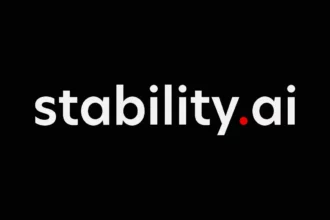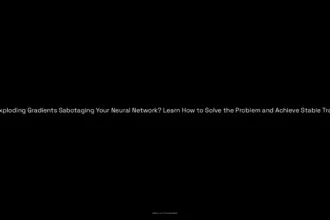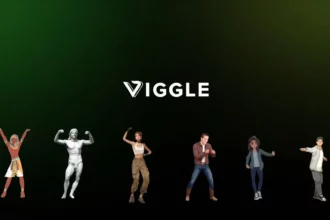When it comes to artificial intelligence, the competition is fierce—and if there are two players worth counting on in the game, it’s Claude and OpenAI. But hold onto your hats, because this showdown is not just about who can churn out the snazziest text or the fanciest code; it’s about who can do it with pizzazz, consistency, and a sprinkle of good humor.
So, let’s dive deep into this matchup but don’t worry, I’ll try to keep it as entertaining as a cat video—no guarantees, though!
Table of Contents
ToggleWho’s Who in AI Land?
Before we roll up our sleeves and get into the ugly details of Claude and OpenAI, let’s introduce our contenders.
OpenAI, the epitome of coding prowess, is like that over-achiever in school who hands in a dissertation when all you were assigned was a book report. It has a reputation for being excellent at spotting bugs and providing technical assistance, not to mention its robust coding capabilities. Think of it as the AI version of a Swiss Army knife—useful for almost anything, just a bit too polished for a casual picnic.
On the flip side, we have Claude, the charming contender that’s bringing more human-like responses to the table. Picture Claude as the laid-back artist who effortlessly produces deep, meaningful works while sipping herbal tea. It’s particularly adept at data extraction and generating natural language outputs, especially for those monotonous tasks we humans just love—said no one, ever.
So, who wears the crown? Let’s break it down.
Natural Outputs: The Conversation King
When talking about natural language generation, Claude seems to have the edge over OpenAI. Users report that Claude has a talent for producing more consistent and human-like responses, especially when dealing with longer projects or iterative tasks. It’s almost as if Claude has secretly taken a few classes in human psychology. In the realm of data extraction and iterative writing, Claude stands tall—perhaps because it’s also not busy writing a textbook when you just want a concentrated answer (looking at you, GPT-4o).
But hold your horses; OpenAI has its own charms. For those engaged in more technical endeavors, like coding or debugging, OpenAI’s GPT-4o shines. It’s designed to flex its technical muscles in situations that require precision, catching those pesky bugs all while reminding you to do your own work—like the strict librarian who won’t do your homework for you.
Iteration & Project Management: The Marathon Runners
Let’s get this straight: when it comes to long-term projects and iterations, Claude is running rings around OpenAI. Users who have worked on lengthy tasks claim that Claude handles these with a natural ease that makes you want to write another 10 chapters just to see how Claude responds. It keeps the conversation flowing smoothly and gets the job done without making you feel like you just wrestled a bear.
Meanwhile, OpenAI’s approach can feel more like a series of obstacle courses. It’s great for spotting errors along the way, but sometimes it can feel like the friend who just can’t stop giving you unsolicited advice. “Oh, you missed a comma there! Here are 500 reasons why you shouldn’t go off track,” it seems to imply.
The Price Tag: Is It Worth It?
Now let’s chat about the lesser-loved—but dear to most wallets—pricing of these services. Claude, as it stands, often slickly undercuts OpenAI, keeping things interesting in the budget department. What good is a high-powered AI if it leaves you broke, sitting next to your empty fridge?
Claude’s expenses are generally more manageable than OpenAI’s, which leans into premium pricing for its more advanced features. This leads to the eternal question: Do you want more bang for your buck, or are you willing to splurge that extra cash for the crème de la crème service? Spoiler alert: most consumers prefer a smarter response AND a few dollars left over for pizza.
Subjectivity: Your Experience May Vary!
Alright, let’s address the proverbial elephant in the room: subjectivity. Personal experience varies wildly when it comes to Claude and OpenAI. What one user treasures, another may find utterly perplexing. Someone might rave that “Claude is way better!” after executing a medical project while another could hold a grudge for its thinly veiled snark when asked to generate specific technical text.
Like convincing your friends that pineapple belongs on pizza (it does!), convincing others of Claude or OpenAI’s merits or deficiencies might be an uphill battle. The moral here? Try both and choose the one that matches your workflow.
Final Thoughts: The Battle is Far from Over
In this vibrant rivalry, both Claude and OpenAI offer unique strengths—each prancing around their pros and cons like they just won a performance competition. Claude dazzles with its human-like interaction while OpenAI flexes its technical prowess—ultimately crossing the finish line like an Olympic athlete preparing for the next round.
As the technology evolves, however, it’s clear that we’ll be keeping a close eye on these two. They aren’t just fighting to be the king of AI; they’re learning and growing as they compete, and that spells good news for us mere mortals who rely on them.
So, to wrap up this AI smackdown, which one is better? In a classic case of “it depends,” your preference depends on your needs, tasks, and possibly your snack choices during work hours—because let’s be honest, we all know coffee runs are an integral part of coding sessions!
Now, pick your fighter and dive in—it’s going to be a wild ride in the world of AI!





